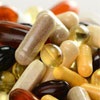
In the late 1990s, researchers studying patients with HIV/Aids discovered that certain complex metabolic changes occurred in individuals on antiretroviral (ARV) therapy.
In particular, researchers became aware that these patients experienced a redistribution of their fat stores and tended to develop raised blood fat levels and raised cholesterol levels.
Whereas the most important dietary problem in people living with HIV/Aids, who aren't on ARVs, is physical wasting or weight loss, and the first concern is to provide these patients with adequate supplies of energy, those patients who do receive ARVs now tend to develop a different spectrum of nutritional problems.
Lipodystrophy
One of the most characteristic features of this change in metabolic requirements is so-called lipodystrophy, which includes wasting of the limbs and redistribution of fat into the abdominal area.
In one study with 154 male patients receiving ARVs (Saint-Marc and coworkers, 2000), the researchers found that the fat contents of the patients' thighs were significantly reduced, while the fat depots in their abdominal areas were increased.
These researchers described three major types of fat distribution abnormalities in HIV patients receiving active ARV therapy, namely:
- fat depletion or lipodystrophy syndrome, which may be related to the use of the ARV stavudine;
- a mixed fat redistribution syndrome;
- a subcutaneous adiposity syndrome (fat deposited under the skin), which may be associated with increased energy intake.
Other metabolic features
In addition to the redistribution of fat in the body, researchers have also found that HIV patients receiving ARV therapy may have other metabolic changes, such as:
- increased insulin levels;
- insulin resistance;
- increased free fatty acid concentrations;
- reduced glucose tolerance and hyperglycaemia;
- increased triglyceride levels;
- increased levels of other blood fats (LDL-cholesterol and total cholesterol).
Solutions
In view of the changes in metabolism identified in HIV patients receiving active ARV therapy, the dietary treatment of such patients also needs to be reviewed.
Whereas HIV patients who do not receive ARVs need to increase their energy intake to prevent wasting and weight loss, those patients who are on ARV therapy require a totally different dietary approach.
Basically, the latter patients who may have developed fat redistribution and raised blood insulin and fat levels need to be treated with diets that combine the principles used for insulin resistance and hyperlipidaemia.
Insulin resistance is treated with a diet that has a low glycaemic index (GI) and a low glycaemic load (GL). This type of diet makes use of foods that have a low GI.
Hyperlipidaemia or raised blood fat levels are treated with a diet that is low in total fat, saturated fat and cholesterol, but still includes the 'good' fats such as monounsaturated and polyunsaturated fats and oils.
In other words, a patient with HIV who is receiving ARV therapy and has developed any one of the above-mentioned changes in metabolism needs a diet that combines the principles of low GI and low fat.
The role of the dietician
It is essential that any HIV patient who is receiving aggressive ARV therapy, who has developed raised insulin levels, insulin resistance and/or raised blood fats, should consult a clinical dietician.
The dietician will assist you in working out a diet that is based on the principles of low GI and low fat and cholesterol, but still contains sufficient energy to prevent wasting due to the viral infection and provides the protective nutrients you require to boost your immune system.
Each patient needs an individual diet because each patient has unique requirements. One patient may react to certain foods (e.g. milk), while another patient may have increased needs for vitamins and minerals.
Many factors play a role in the dietary treatment of HIV/Aids, for example diarrhoea or infections of the mouth and throat may make food intake difficult. This is the reason why you need to consult a dietician to work out a diet that is specifically tailored to your individual needs.
If you do not have access to a dietician in private practice, you may be able to consult a community dietician or a dietician working in one of our state hospitals. If possible, try to discuss your dietary problems with your dietician or ask your clinic to refer you to someone.
HIV/Aids is a complex problem, but with the correct diet and treatment, patients can improve their quality of life and combat this dreaded disease. – (Dr Ingrid van Heerden, DietDoc)
(Reference: Saint-Marc et al (2000). A syndrome of peripheral fat wasting (lipodystrophy) in patients receiving long-term nucleoside analogue therapy. AIDS, Vol 14:7:905-906)




 Publications
Publications
 Partners
Partners











